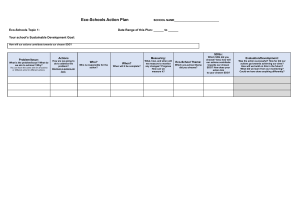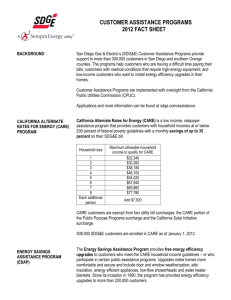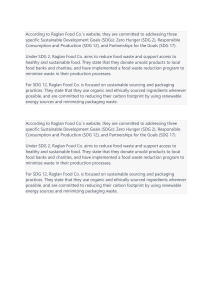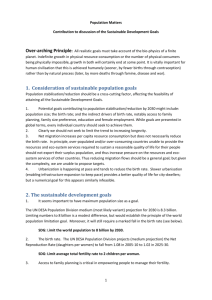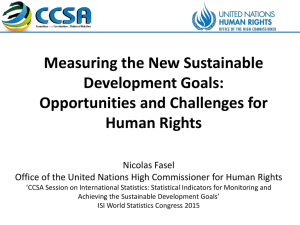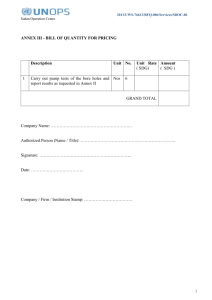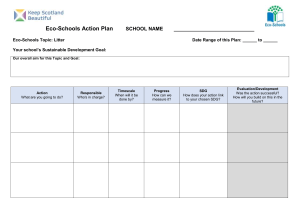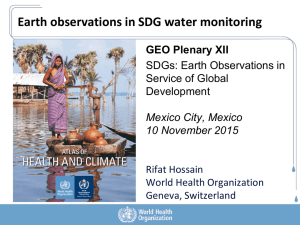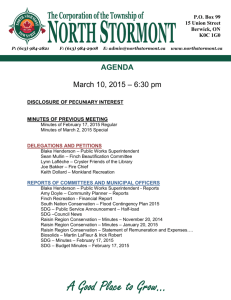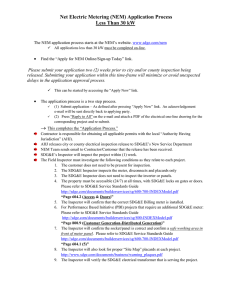Identification and the SDGs ITU Workshop on Digital Financial Services and
advertisement
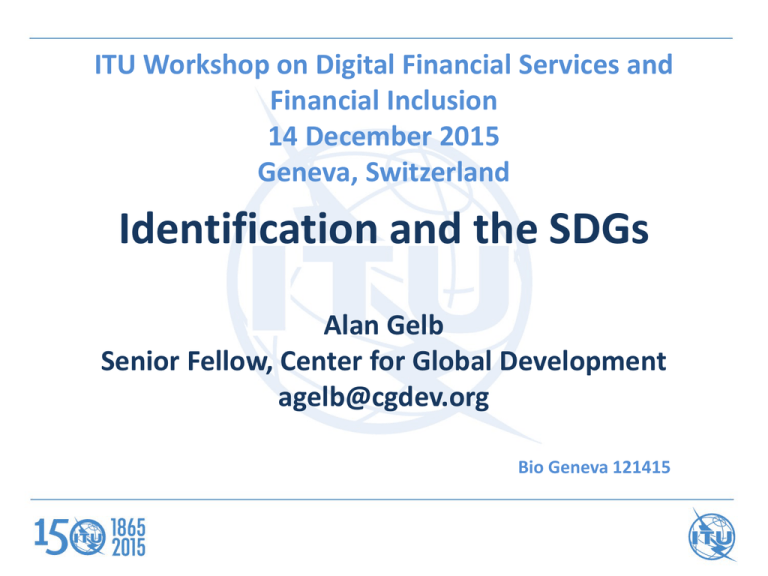
ITU Workshop on Digital Financial Services and Financial Inclusion 14 December 2015 Geneva, Switzerland Identification and the SDGs Alan Gelb Senior Fellow, Center for Global Development agelb@cgdev.org Bio Geneva 121415 Identification and the SDGs SDG Target 16.9: “Provide legal identity for all, including through birth registration, by 2030.” • • • • This is the first time that a target referring to identity or identification has been included as a development goal Is identity a target in itself or an instrument for other targets? What does target 16.9 mean and how should we measure it? How many people might not have identity in the developmental sense? What are the costs, benefits and the value proposition? Identity: Right or Instrument? Legal identity long seen as human right: • Article 15.1 UDHR 1948: “Everyone has the right to a nationality • Articles 7,8 CRC 1989: The child shall be registered immediately after birth and shall have the right from birth to a name, the right to acquire a nationality and. as far as possible, the right to know and be cared for by his or her parents.........States Parties undertake to respect the right of the child to preserve his or her identity, including nationality, name and family relations as recognized by law without unlawful interference However identity can also be seen as an instrument to facilitate the achievement of other goals and to strengthen state capacity. SDG Targets Facilitated by ID? • Social protection, including for the most vulnerable SDG 1.3 • Assistance in dealing with shocks and disasters SDG 1.5 • Access of the poor to economic resources, including property and finance SDG 1.4 • Empowerment of women SDG 5a; SDG 5b. • Ending preventable deaths of newborns SDG 3.2 • Improving energy efficiency and eliminating harmful energy subsidies SDG 12c • Reducing remittance costs SDG 10c • Fighting crime and terrorism SDG 16a • Reducing corruption SDG 16.5 • Strengthen domestic tax collection SDG 17.7 We have examples for all of these targets. Focus: ID and Financial Inclusion Three roles of strong ID in financial inclusion • KYC requirements. Many countries have implemented tiered KYC requirements for banking and mobile money. The lowest tier requires basic ID and ability to authenticate – India, Peru, South Africa Kenya….. – Uniqueness as a control against smurfing • Authenticating customers for transactions – Prodem, Azteca, Opportunity, Bradesco…others • Strengthening credit monitoring to widen access to loans – Kenya: Credit information system If government does not provide robust, accessible ID financials and mobiles will have to do so themselves. This will raise costs and exclude small clients. Identity Programs • More countries are implementing nation-wide ID programs. There are also many functional programs: voting, pension, health etc. card) – Almost all of the newer programs are digital or e-IDs and almost all use biometrics – Use extending from authentication (1-1) to identification (1-N) and uniqueness (N-N) • “Coverage” is difficult to define because development may require “official” identity (identity for a variety of official purposes) rather than only “legal” identity (identity associated with legal status such as a birth certificate, passport or NID card) – About 625 million (0-5) not registered at birth, 2 million lack birth certificate – Perhaps 2 billion people do not have an NID though many have other forms of identification • • Rolling out an ID system requires both effective supply and demand for ID services NIDs have advanced slowly in countries like Nigeria or Mexico where there are other forms of ID that reduce demand for the NID – Voter cards, social security, pension, banking, etc. • But ID programs can be rolled out rapidly if good management and demand Identity programs continued • The architecture of many developing country ID systems differs from the “OECD model” based on a strong system of birth and civil registration – ID Breaks: from civil registration to ID – ID Fractures: across incompatible ID programs • Often the problem is not the absence of ID but the lack of coherence of multiple ID initiatives – Nigeria, Mexico, Tanzania….. – In these countries consolidation would save resources: lack of money is not always the problem • An issue also for donors who support at least half of the ID programs in LICs and MICs. ID Value Proposition • Costs of an ID System? Varies but guesstimate steady state around $134 million per year for country with 100 million enrolled (Gelb-Diofasi forthcoming based on Atick) – For average LIC (GDP/head $670) = 0.2% of GDP • Total government wage, transfer payments typically 10-15% of GDP • Value proposition: can eliminate leakage, fraud equivalent to 2% of this spending? – Modest improvement relative to number of cases – Potential savings large in subsidy programs – Also a range of fees including from e-applications • Financing plan: sequence applications with rollout, aim for fee income from commercial applications – Peru, Pakistan, …service and authentication fees cover most/all costs of ID agency • But will look less favorable with multiple ID programs Some Future Priorities • More strategic approach towards ID and development at country level – Including donors, development partners and industries: ensure both supply and demand – This is starting to happen: ID4D, ID4Africa…. • Strengthen focus on civil registration and revisit mandates that now serve to fragment ID space in many countries – “Official” ID as a shortcut if “legal ID” is complex • Work towards standards and competition to bring down costs – Aadhaar as an example. Thank You
